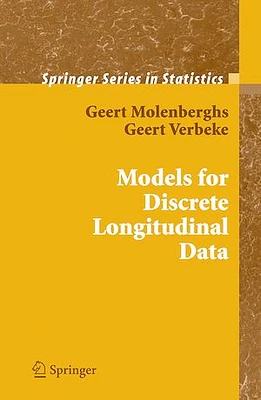Accueil
Models for Discrete Longitudinal Data

LIBRAIRIE CARCAJOU
Models for Discrete Longitudinal Data
De Librairie Carcajou
"About this book
This book provides a comprehensive treatment on modeling approaches for non-Gaussian repeated measures, possibly subject to incompleteness. The authors begin with models for the full marginal distribution of the outcome vector. This allows model fitting to be based on maximum likelihood principles, immediately implying inferential tools for all parameters in the models. At the same time, they formulate computationally less complex alternatives, including generalized estimating equations and pseudo-likelihood methods. They then briefly introduce conditional models and move on to the random-effects family, encompassing the beta-binomial model, the probit model and, in particular the generalized linear mixed model. Several frequently used procedures for model fitting are discussed and differences between marginal models and random-effects models are given attention.
The authors consider a variety of extensions, such as models for multivariate longitudinal measurements, random-effects models with serial correlation, and mixed models with non-Gaussian random effects. They sketch the general principles for how to deal with the commonly encountered issue of incomplete longitudinal data. The authors critique frequently used methods and propose flexible and broadly valid methods instead, and conclude with key concepts of sensitivity analysis.
Without putting too much emphasis on software, the book shows how the different approaches can be implemented within the SAS software package. The text is organized so that the reader can skip the software-oriented chapters and sections without breaking the logical flow.
From the reviews:
"Strengths of this book include its breadth of topics, excellent organization and clarity of writing...I highly recommend this book to my colleagues and students." -Justine Shults for the Journal of Biopharmaceutical Statistics, Issue 3, 2006
"






















